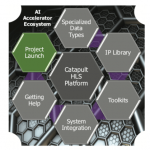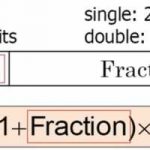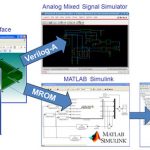It hard to imagine design of a complex signal processing or computer vision application starting somewhere other than in MATLAB. Prove out the algorithm in MATLAB, then re-model in Simulink, to move closer to hardware. First probably an architectural model, using MATLAB library functions to prove out behavior of the larger system.… Read More
Tag: matlab
An AI Accelerator Ecosystem For High-Level Synthesis
AI accelerators as engines for object or speech recognition (among many possibilities), are becoming increasingly popular for inference in mobile and power-constrained applications. Today much of this inferencing runs largely in software on CPUs or GPUs thanks to the sheer size of the smartphone market, but that will shift… Read More
1-on-1 with Anirudh Devgan, President, Cadence
At the Design Automation Conference, no one is busier than an EDA company executive — conference panels, product launch briefings, customer meetings, and corporate dinners all place considerable demands on their time. I was fortunate enough to be able to meet with Anirudh Devgan, President of Cadence, at the recent DAC55 in San… Read More
Cadence DSPs float for efficiency in complex apps
Floating-point computation has been a staple of mainframe, minicomputer, supercomputer, workstation, and PC platforms for decades. Almost all modern microprocessor IP supports the IEEE 754 floating-point standard. Embedded design, for reasons of power and area and thereby cost, often eschews floating-point hardware… Read More
Pseudo random generator tutorial in VHDL (Part 3/3)
On the first two chapters of this Tutorial we started with a simple LFSR module and added a test bench. Then, on chapters three and four we upgraded our module with some features and learned to export the test bench data to files.
… Read More
Pseudo random generator tutorial in VHDL (Part 2/3)
In the first part of this tutorialwe started with a simple implementation of an LFSR block (Chapter 1) and its test bench (Chapter 2). Let’s make our code look a bit more professional.
… Read More
Pseudo random generator tutorial in VHDL (Part 1/3)
In this tutorial we will see how to design a VHDL block. We will start with a very simple block and we will gradually add features to it. We will also simulate it and test its output with Matlab. Over the process we will see:
… Read More
What makes the world smart?
The simple answer is when everything in the world is smart. But if you think deeply, you would find that the continuous progression to make things easy in life is what makes the world smarter day-by-day – the sky is the limit. In the world of computing, consider the 17[SUP]th[/SUP] century era when humanbrain was used as a computer … Read More
What will drive MEMS to drive I-o-T and I-o-P?
By I-o-P, I mean Internet-of-People- I couldn’t think of anything better than this to describe a technology which becomes your custodian for everything you do; you may consider it as your good companion through life or an invariably controlling spy. This is obvious with the embedded sensor techno-products such as Kolibree, a … Read More
MEMS in The World of ICs – How to Quickly Verify?
In the modern electronic world, it’s difficult to imagine any system working as a whole without MEMS (Micro-electromechanical Systems) such as pressure sensors, accelerometers, gyroscopes, microphones etc. working in sync with other ICs. Specifically in AMS (Analog Mixed-Signal) semiconductor designs, there can be significant… Read More








